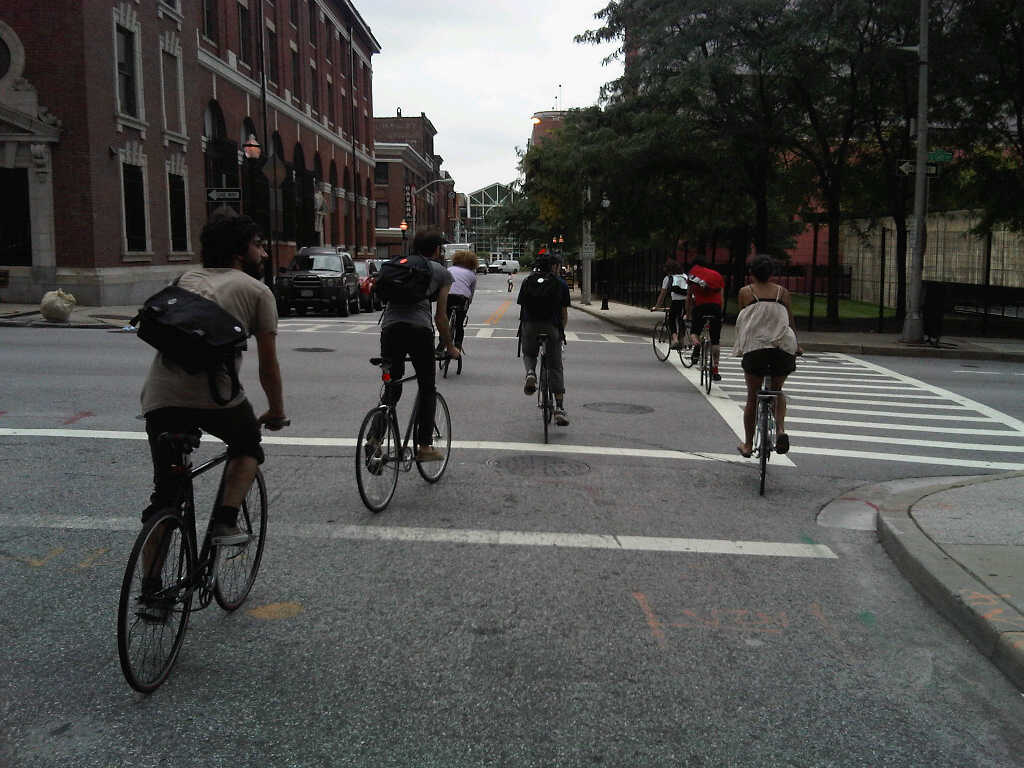The proposed bicycle master plan update includes many ambitious and excellent proposals for improving safety and comfort for bicyclists in Baltimore, whether they ride for recreation or transportation. The proposed bicycle facility network, once fully constructed, would allow many thousands of Baltimore residents and visitors to be able to use bicycle-specific infrastructure to access their jobs, schools, grocery stores, favorite restaurants, and social activities by bicycle. The health, quality of life, and local economic benefits of a high quality bicycle transportation network are well documented, and the City should be commended for its plans to implement these measures.
However, recent events in our City underscore the fact that it is not simply the presence of a bicycle facility, but also the type of bicycle facility that really increase the safety and comfort of bicyclists.
The Master Plan Update includes the possibility of standard bicycle lanes on "main routes," which are often identified to be located on arterial roadways, and shared lane markings, or sharrows for "minor routes." There may be some streets where these treatments are appropriate, but facility selection must be strategic and sensitive to the operating conditions of the street, in order to maximize the safety and comfort of all users.
Bikemore's proposal is that facilities with some physical separation be the default preferred facility for streets with 85th percentile speeds above 25 miles per hour. This is the suggested threshold because it is an approximation of the speed beyond which crashes between automobiles and bicyclists or pedestrians become dramatically more likely to result in death or grievous injury. We propose using measured 85th percentile speeds as opposed to the speed on the speed limit sign because of the frequency with which drivers exceed the speed limit.
Furthermore, sharrows are only an appropriate choice for local streets, and in conjunction with traffic calming and "bicycle boulevard" measures that keep 85th percentile speeds below 25 mph, or, ideally, closer to 20 mph. It may also be appropriate to use sharrows to connect short gaps between higher quality facilities. This position is consistent with NACTO Bikeway Design Guidelines and emerging research about the safety and functionality of different bicycle facility types.
These recommendations will result in the selection of safer, more comfortable facilities, while also allowing for creative solutions in locations where space may be too constrained for a separated bicycle facility.
For example: if the 85th percentile speed on a street is above 25 mph even though the signed speed is not, and a separated bicycle facility cannot be accommodated, we would find it an acceptable solution to install the standard lane or a paint-buffered lane in conjunction with bicycle friendly traffic calming measures. In severely space constrained locations, standard painted bike lanes may be acceptable in the absence of traffic calming measures for small lengths of narrower cross section on a street, if other factors such as adjacent parking, driveway conflicts, and door zones are taken into account. Where these compromises must be made, we recommend that Bikemore or other credible bicycle advocacy entities be consulted to help collaboratively develop the safest and most comfortable bicycle facility that is feasible in the space available.












